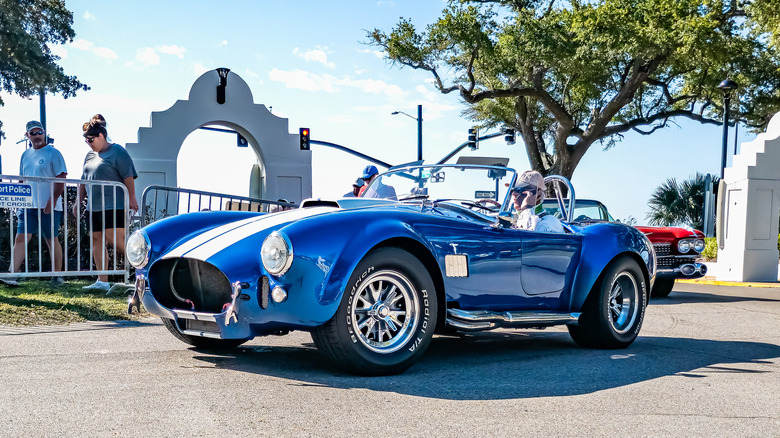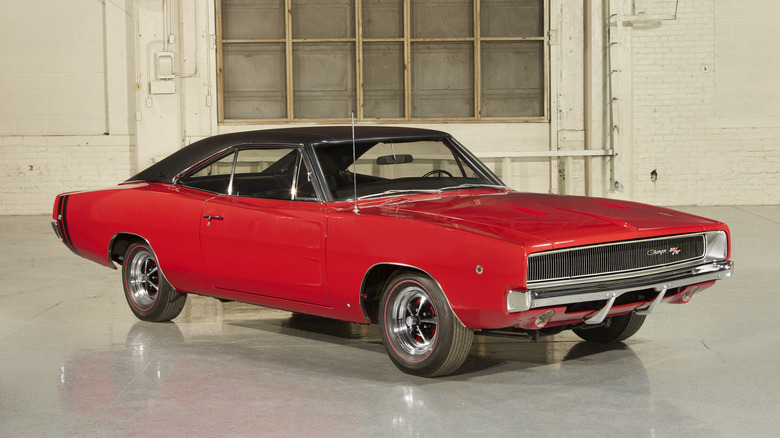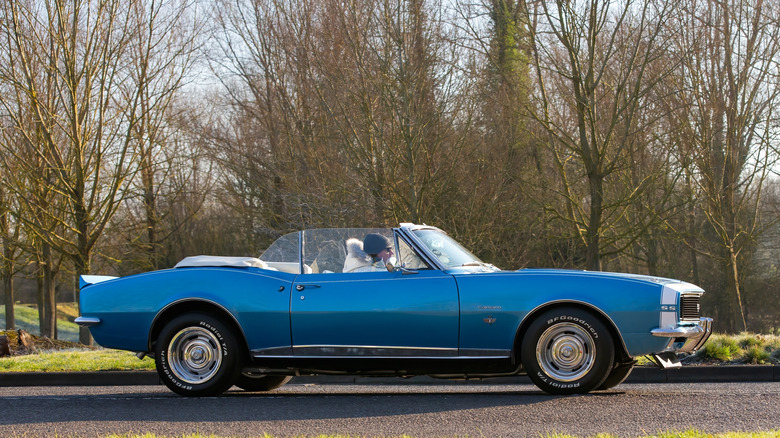What Gives Old V8s That Classic Sound? (And How Modern Engines Lost It)
When it comes to defining a car's character, a crucial component lies in the engine sound. Whether it's an operatic Ferrari V12, or the burble from a Subaru boxer, there are certain sounds we identify with one particular type of car more than any other. When talking about classic muscle cars, nothing comes to mind more clearly than the animalistic growl of an old school V8. What exactly produces this sound, and why is it seemingly lost in today's world?
The short answer lies in the way these engines were constructed. Older, more mechanical V8s featured no real sound deadening such as specialized mufflers and catalytic converters on the exhaust end. On the intake end, they sported carburetors linked to a mechanic throttle body and a basic intake that generally rested right on top of the engine block, meaning there's less stuff in the way that modifies the sound.
Moreover, the way these engines work differs drastically to how most modern cars work. Carburetors gave way to fuel injection in the 80s, emissions controls standardized certain types of exhaust systems, cam profiles are different, and so on.
Effectively, this means that no engine today can truly emulate the iconic sound signature of a classic V8 without modification, but what causes them to sound this way, specifically? What components do modern engines have that classic muscle cars don't that modify the sound in specific ways outside of just generic intake and exhaust? Let's take a closer look at how engines actually produce noise in the first place, and how these devices modify the sound then versus now.
The science behind creating certain sounds
There are two main mechanisms at play when it comes to how engines produce noise, the moving parts articulating within the engine, and the explosions the engine produces during the combustion cycle. The latter form pressure waves inside of the exhaust pipe — basically, they're gas bubbles that accelerate out the end of the pipe, hence why exhaust tends to puff rather than be a continuous stream. These produce sounds with specific resonant frequencies, which are modified by several factors of a car's exhaust system, such as resonators and mufflers, which accomplish two different things.
The same rule applies to the intake — a car's intake geometry affects sound at the other end. While it won't change a car's exhaust note, upgrades like a true cold-air intake feature characteristic noises. Hence, certain elements present in classic V8s on the intake side contribute to its characteristic sound signature as well.
Generally, classic V8s feature less refined exhaust systems, with some even boasting side-exit exhaust systems like the Shelby Cobra and C2 Corvette. However, there is an inherent science behind the way the engine is shaped, which is why, for instance, a Ferrari's V8 sounds different to a GM V8. Moreover, if the exhaust headers are of different lengths, those puffs the engine makes travel at different distances, so some catch up or fall behind in the exhaust pipe, which produces the lumpy sound associated with classic muscle car exhaust. Lastly, the cylinder firing order also creates that uneven, galloping sound.
Why modern V8s don't produce this sound anymore
There's no strict rule that says that modern cars can't emulate this sound without modification. There are ways for modern V8s to sound this way, with one of the most common being camming, or installing a wider, more aggressive camshaft.
This creates an overlap between two different sets of valves, a phenomenon colloquially known as cam loping, which simulates that characteristic galloping noise. Ultimately, what's producing the noise is specific resonant frequencies in the exhaust caused by the sound waves the engine produces. Therefore, modifying the note at its source — the combustion chamber — produces this effect on modern cars.
However, apart from limited, specialized applications, no production vehicle deliberately produces this effect from the factory because of the way wide cams work. If you activate both the intake and exhaust valves at once, some air-fuel mixture will inevitably go down the exhaust valve instead of being properly combusted. This is actually better at high RPMs — the longer the valve is open, the more fuel is injected, and the higher performance you get, but the trade-off is a rough idle and poor efficiency at lower RPMs.
This demonstrates just one of several ways modern cars simply will never sound like classic muscle cars from the factory, the other major reason being the exhaust. Modern cars feature advanced sound dampening, mufflers, resonators, and other methods to fine tune the sounds, whereas many older muscle cars lack these, producing a more raw signature.


